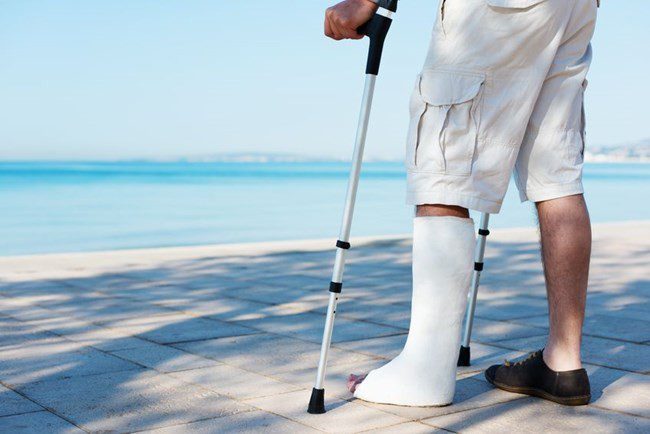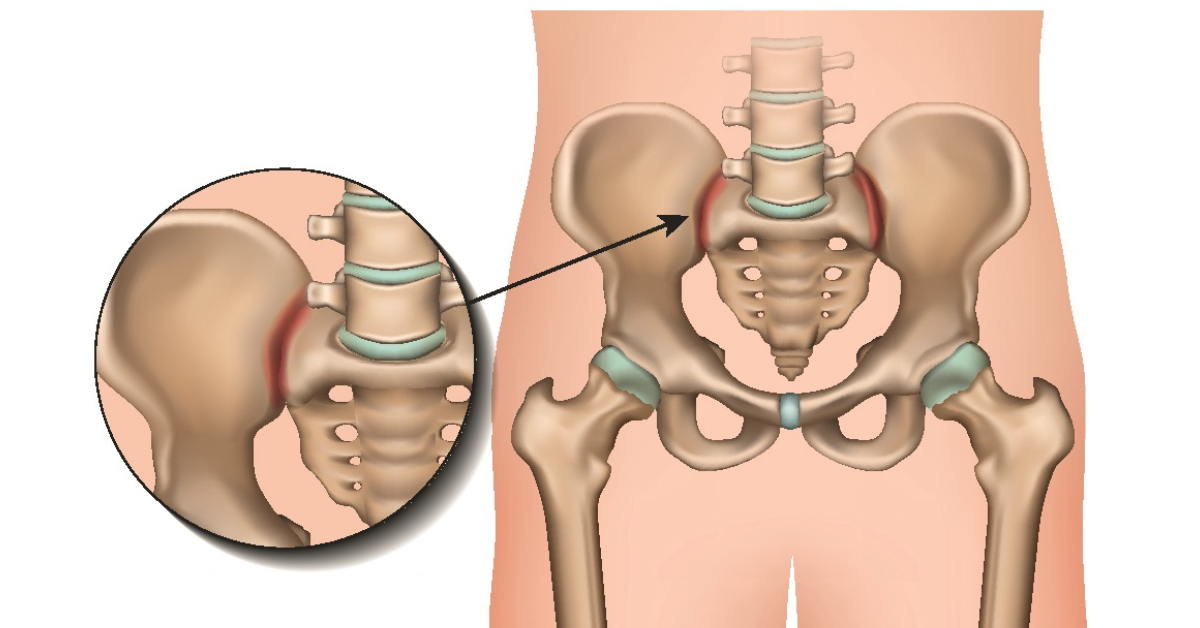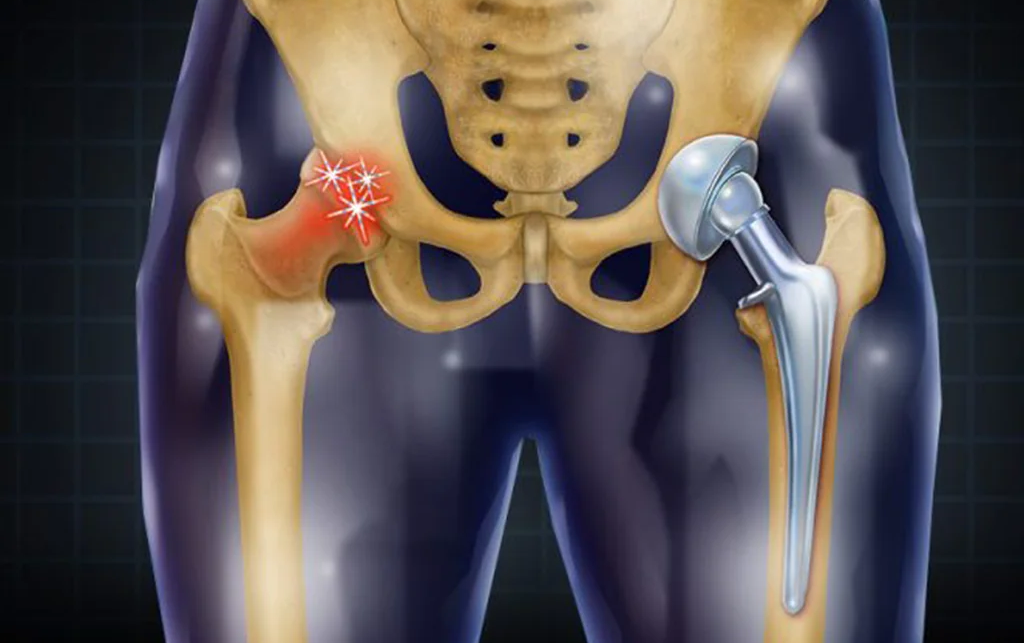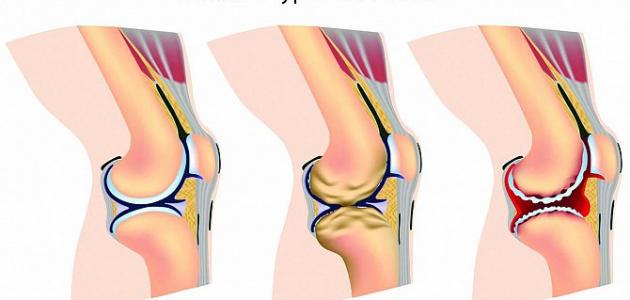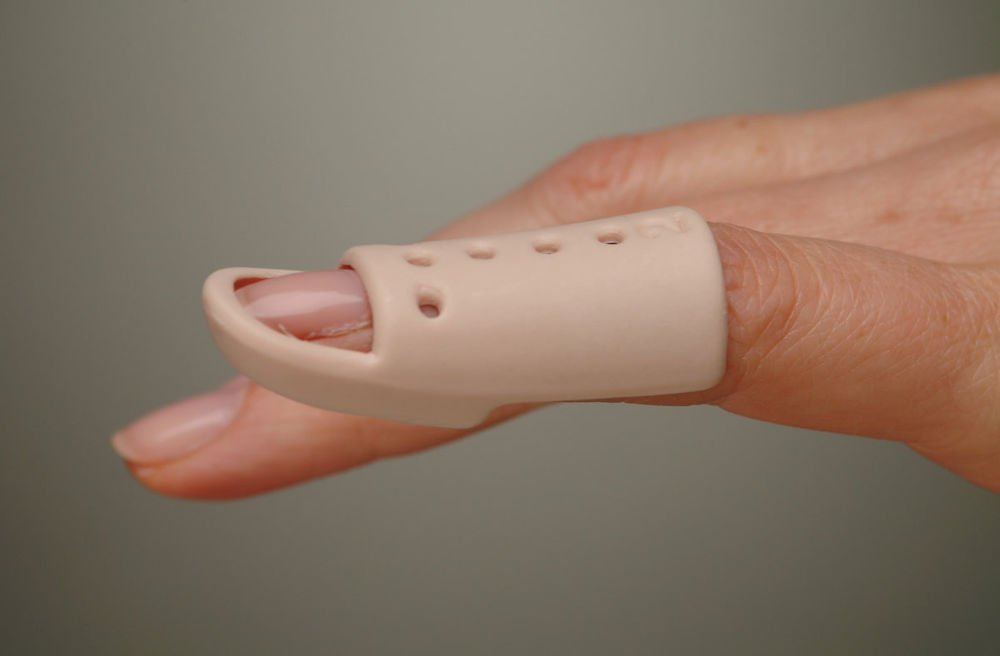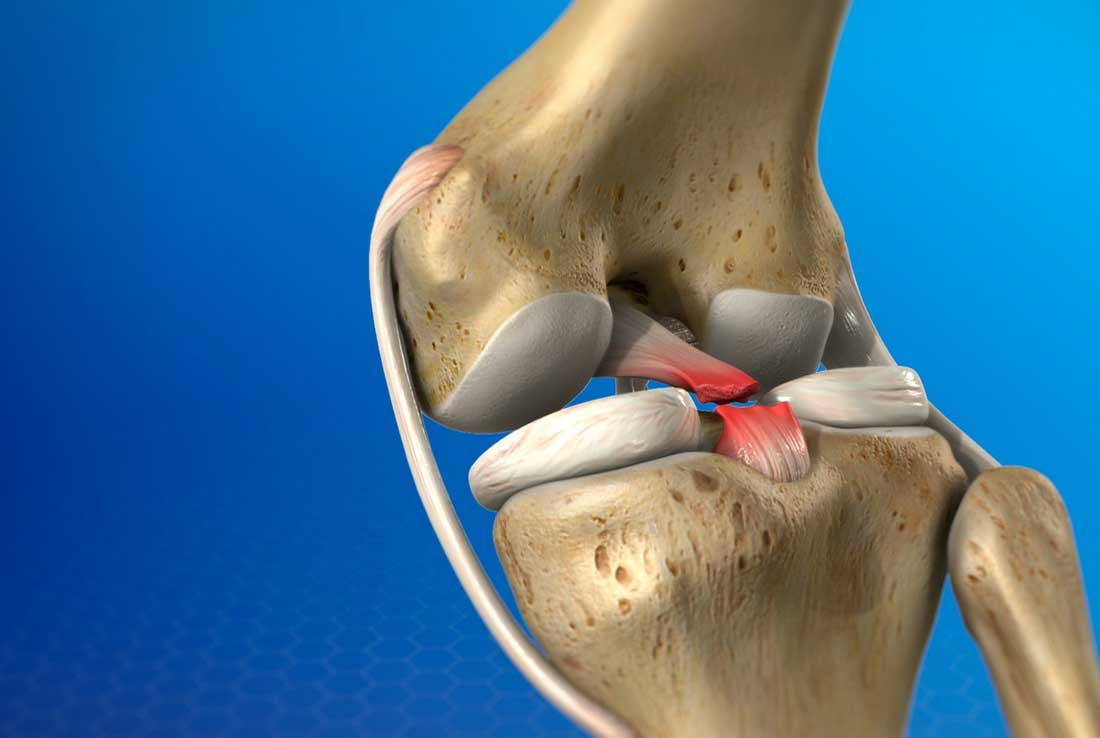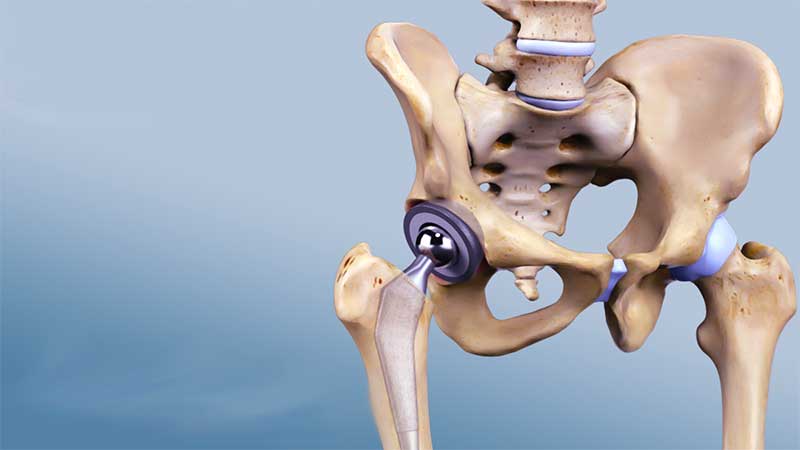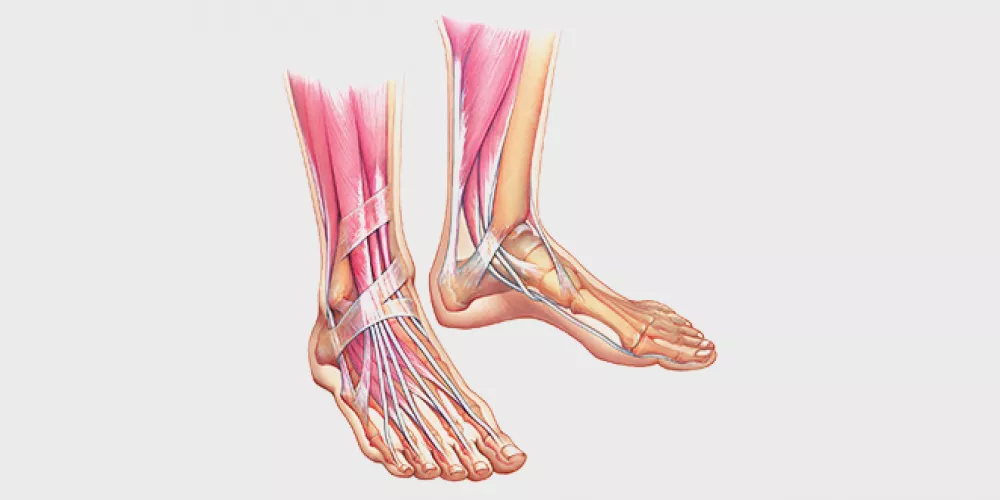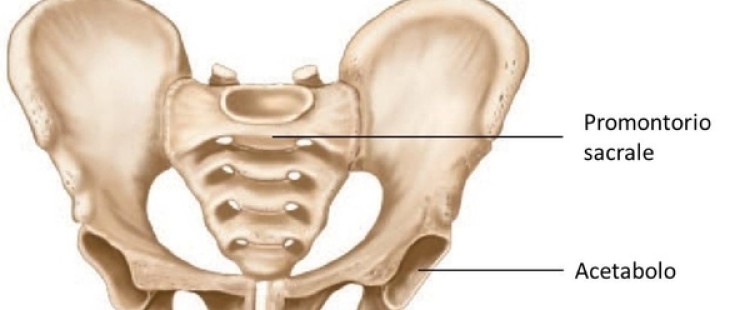Massaging the Quadriceps Muscle and Prevention Techniques
Massaging the Piriformis Muscle, you may hear this term for the first time from us, so through this article, we will get acquainted in a simple way with the most important information related to it in terms of its causes, symptoms, and how to diagnose it, in addition to its various treatment methods and how to relieve and prevent it.

Massaging the Piriformis Muscle
The piriformis muscle is considered one of the important muscles in the human body, located in the buttock area near the upper hip joint. Many people suffer from tension or injuries in this muscle, causing annoying pain and affecting their daily lives.
Massaging the piriformis muscle is considered one of the effective and natural ways to relieve its pain and improve its condition. Massage works to improve blood circulation in the muscle, relieve muscle tension, and moisturize the surrounding tissues. Massage also contributes to improving the flexibility of the muscle and activating it, which helps strengthen the muscle and improve its functions. It is recommended to massage the piriformis muscle regularly using appropriate massage techniques. The person can perform this massage themselves using the appropriate pressure and gentle massage movements.
The therapeutic massage technique for the piriformis muscles is suitable for people who suffer from muscle tension or persistent pain in the buttock area. People can benefit from a combination of massage techniques, including moderate use of pressure, kneading, and pushing.
What is the Piriformis Muscle?
The piriformis muscle is an important muscle in the buttock area, resembling the shape of a pear, located near the upper hip joint. This muscle works to move the lower part of the body and contributes to the rotation of the hip and the movement of the leg and foot outward. The piriformis muscle appears deep in the buttock area and is responsible for assisting in the external rotation of the hip.
In addition to abducting the leg from the midline of the body. Sometimes the piriformis muscle can cause symptoms such as chronic pain, tingling, or numbness in the buttock and thigh area, especially on one side. For this reason, it is important to pay attention to the health and strength of this muscle to maintain daily movement and comfort. We have a completely satisfactory experience in massaging the piriformis muscle with Dr. Amr Amal.
What is Piriformis Syndrome?
Piriformis syndrome is an injury that occurs in the piriformis muscle located deep in the buttock area. This injury leads to irritation and compression of the sciatic nerve that passes behind this muscle. Athletes often suffer from this condition during intense training periods. Piriformis syndrome is characterized by the appearance of annoying and chronic pain, and this pain may be accompanied by other symptoms such as tingling, numbness, and numbness.
The pain usually starts in the buttock and hip area and may extend to the back of the thigh and even the leg. Piriformis syndrome is considered an uncommon nerve condition, and it is believed to be caused by strangulation and irritation of the sciatic nerve. This nerve is a large nerve that emerges from the lower part of the spine and helps control the movement of the thigh, knee, and legs.
Maintaining good physical fitness and adopting proper training techniques is essential to reduce the risk of developing this syndrome. In cases of early diagnosis and proper treatment, pain can be reduced, and the patient’s condition can gradually improve. To learn more about sciatica, read this article.
Tips for Relieving Piriformis Syndrome Pain
This syndrome causes pain and tension in the piriformis muscle, which is located in the buttock area. To relieve this pain and improve the quality of life, some helpful tips and medical measures should be followed. Here is a list of some tips that can be followed to relieve piriformis syndrome pain:
- Exercise regularly: It is recommended to exercise regularly with low-intensity, pain-free exercises to strengthen the muscles and improve their flexibility. Stretching the piriformis muscle is considered one of the beneficial exercises to obtain relief from sciatic nerve pain caused by a tightened piriformis muscle. This exercise involves placing the affected leg on an elevated surface and trying to extend the knee. It is advisable to consult a physical therapist to determine the most appropriate exercises for your condition.
- Massage the affected area: Massage is one of the effective ways to relieve piriformis muscle pain. Moderate pressure with the fingertips can be used to massage in a circular motion around the piriformis muscle to improve blood flow and reduce tension.
- Apply ice and heat: Applying ice to the pain area for 15-20 minutes several times a day is one of the effective ways to reduce inflammation and relieve pain. After 48 hours, heat (such as a hot water bottle or a warm, damp towel) can be applied to the affected area to soothe the muscles and improve blood circulation.
- Rest and relaxation: It is advisable to get enough rest and sleep, as physical relaxation contributes to reducing tension and soothing inflamed muscles. You can try relaxation techniques such as deep breathing and meditation to achieve complete relaxation.
- Spinal adjustment: In some cases, the doctor or massage therapist may recommend spinal adjustment to improve posture and pressure distribution and relieve sciatic nerve pain associated with piriformis syndrome. This is done through techniques performed by specialized chiropractors.
It is essential to consult a specialist if the pain persists or worsens to have your condition thoroughly evaluated and receive appropriate treatment guidance. Additionally, it is advisable to avoid any activity that increases piriformis muscle and associated sciatic nerve pain. Listen to your body and take enough time to heal to return to an active life without pain.
Ensure success in treatment and relief from piriformis muscle pain with Dr. Amr Amal.
What are the Causes of the Piriformis Muscle?
In this article, we will address an important topic related to piriformis muscle syndrome and its causes. Here, we will provide you with a list of the most prominent potential causes of this nerve condition:
- Sciatic nerve compression: Compression of the sciatic nerve can occur due to inflammation or strangulation of the nerve in the hip area. Muscle pressure on the sciatic nerve can cause pain and numbness in the area extending from the leg to the knee.
- Piriformis muscle inflammation: Inflammation can occur in the deep piriformis muscle, which is located in the hip area. Spasm and inflammation of this muscle can lead to pressure on the adjacent sciatic nerve, resulting in piriformis syndrome symptoms.
- Herniated or slipped disc: This can be a major cause of piriformis syndrome, as pressure is exerted on the sciatic nerve root due to a herniated or slipped disc. This can cause severe pain in the hip and buttocks that extends to the leg. For more information about disc herniation, click here.
- Injuries and trauma: Sports injuries or direct trauma can cause damage to the muscles and surrounding tissues at the hip level. This can lead to the appearance of piriformis syndrome symptoms.
- Bone and joint inflammation: In some cases, inflammation in the bones or joints near the hip can occur, causing pressure on the sciatic nerve and leading to symptoms similar to piriformis syndrome.
It is important to note that these causes are general estimates, and this article should not be used as a specific medical diagnosis. If you are experiencing symptoms that indicate piriformis syndrome, it is essential to consult a specialist to accurately diagnose your condition and prescribe appropriate treatment.
What are the Symptoms of Piriformis Syndrome?
Piriformis syndrome may not be familiar to many, but it is an uncommon nerve condition that can affect the hip and buttock area. Piriformis syndrome can cause severe and annoying pain in the back of the thigh and buttocks and can extend to the leg and foot.
In this section, we will look at the symptoms of piriformis syndrome and what it can cause, which include the following:
1. Persistent and chronic pain: There is a feeling of excruciating pain in the back of the thigh and buttocks when suffering from piriformis syndrome. This pain can be chronic and last for a long time.
2. Pain or tingling: The pain in the piriformis muscle can be accompanied by other annoying symptoms, such as tingling or severe pain in the affected area.
3. Feeling of numbness or numbness: Strangulation of the accompanying sciatic nerve in piriformis syndrome can cause tingling or numbness in the thigh, leg, or foot.
4. Muscle swelling: Swelling can occur in the area of the muscle affected by piriformis syndrome. This swelling can affect the adjacent sciatic nerve and cause pain and other symptoms.
5. Difficulty moving or moving: Piriformis syndrome can affect the ability to move normally. People with piriformis syndrome may find it difficult to move their thighs easily and may experience difficulty in movements that require moving the buttocks.
6. Pain in the buttock area: The buttock area is one of the main areas where piriformis syndrome causes pain. Persistent and severe pain can include the piriformis muscle and the entire buttock area.

How is Piriformis Syndrome Diagnosed?
Piriformis syndrome is diagnosed using several different methods. The method used depends on evaluating the symptoms and clinical signs that the patient is experiencing, as well as ruling out other medical conditions that share similar symptoms.
Medical History and Clinical Examination:
Taking a medical history and performing a clinical examination are important steps in diagnosing piriformis syndrome. Information about the symptoms and changes experienced by the patient is collected, and a clinical examination is conducted to verify the presence of tangible signs such as pain, sensitivity, and numbness in the hip and buttock area, as well as examining movement and muscle response.
Diagnostic Tests:
Diagnostic tests are used to identify and confirm the diagnosis of piriformis syndrome. These tests include:
- CT scans and MRI: These tests can reveal any changes in the structure of the muscles and nerves and show the presence of pressure on the sciatic nerve and enlargement of the piriformis muscle.
- Electromyography (EMG): Used to identify and record electrical activity in muscles and nerves, which can be useful in ruling out other medical conditions.
- Nerve examination: This examination includes tests for sensitivity, movement, and muscle response to verify the effect of piriformis muscle compression on the sciatic nerve.
Medical Consultation:
In cases where piriformis syndrome is suspected, the patient should consult a doctor specializing in muscle and nerve disorders. The doctor has the necessary expertise and knowledge to accurately assess and diagnose the condition and determine the necessary steps for treatment.
Discover the difference with Dr. Amr Amal in treating and relieving piriformis muscle pain.
How to Prevent Piriformis Syndrome?
To prevent piriformis syndrome, certain preventive measures and precautions should be followed that help reduce the chances of developing this problem. Here are some tips that can be followed to prevent piriformis syndrome:
- Avoid sitting for long periods: It is recommended to avoid sitting for long hours without movement or stretching exercises. You can set a reminder to get up and do stretching exercises every hour or so to maintain muscle flexibility and prevent spasms.
- Practice stretching exercises: It is recommended to practice stretching exercises for the abdominal muscles and gluteal muscles (gluteus) regularly. These exercises can help strengthen the muscles and increase their flexibility, thus reducing the chances of developing piriformis syndrome.
- Massage the piriformis muscle: Massaging the piriformis muscle is considered an effective method for reducing the chances of spasms and irritation in this muscle. A sponge roller or ball can be used to gently massage the muscle in a circular motion to improve its circulation and reduce tension.
- Maintain good posture while sitting: Attention should be paid to maintaining a proper sitting posture, where it is recommended to sit with a straight and balanced back, and support the back with suitable pillows to reduce pressure on the muscles and nerves in the buttock area.
- Avoid heavy loads: It is preferable to avoid lifting heavy weights or carrying heavy bags on the back, as these activities can increase muscle pressure on the sciatic nerve and cause piriformis syndrome.
If symptoms of piriformis syndrome persist for a long time, it is advisable to consult a specialist for a thorough evaluation and prescription of appropriate treatment. Preventive treatment for this problem may include the use of muscle relaxants, taking non-steroidal anti-inflammatory drugs, and physical therapy to stretch the piriformis muscle.
How is the Piriformis Muscle Treated?
- Medical Diagnosis and Evaluation:
- The diagnosis of piriformis muscle syndrome is determined through a comprehensive medical evaluation that includes studying the patient’s history, symptoms, and clinical signs.
- Other medical examinations may include muscle strength testing, MRI, or ultrasound imaging to confirm the diagnosis.
- Conservative Treatment:
- Conservative treatment includes rest and avoidance of activities that cause pain.
- Ice or cold packs can be used to reduce inflammation and pain.
- It is recommended to avoid sitting for long periods and to use supportive pillows to reduce pressure on the piriformis muscle.
- Therapeutic Exercises:
- It is recommended to perform exercises to strengthen the core muscles, such as strengthening the back and abdominal muscles, to reduce pressure on the piriformis muscle.
- The physical therapist teaches stretching and massage techniques to strengthen the muscles surrounding the piriformis muscle and improve blood circulation in the affected area.
- Medications:
- Medications can be used to relieve pain and reduce inflammation, such as paracetamol and non-steroidal anti-inflammatory drugs like naproxen.
- In some cases, doctors may prescribe corticosteroids to manage symptoms. For example, prednisone is used to reduce inflammation.
- Alternative Treatment:
- Camphor oil is one of the alternative treatments used to relieve muscle problems and spasms. It can be used by gently massaging the affected area to stimulate blood circulation.
Patients should consult with doctors and medical professionals before applying any treatment or exercise. Ongoing treatment and adherence to medical guidance may be required to achieve the best results in treating piriformis syndrome.
Physical Therapy for the Piriformis Muscle
Some doctors may recommend physical therapy as part of the formal treatment for piriformis syndrome. Physical therapy aims to strengthen the core muscles, train stretching and massage techniques, and improve movement coordination.
Due to the various methods and techniques used in physical therapy for quadriceps syndrome, we will provide you with a list of natural ways that can help alleviate pain and improve movement, as follows:
- Core Muscle Exercises: These exercises aim to strengthen the core muscles that support and stabilize the quadriceps and improve the stability of the thigh joint. Among these exercises are reverse crossovers, knee raises, weight training routines, and stability ball training. It is recommended to perform these exercises under the supervision of a physical therapy specialist.
- Stretching and Massage: Stretching and massage techniques work to relieve tension in the quadriceps muscle and improve blood circulation. Various methods can be used, such as deep tissue massage and instrument-assisted massage. It is important to consult a specialist to apply these techniques properly.
- Heat and Cold Therapy: Heat therapy using hot water or a heating pad can help alleviate pain and soothe inflamed quadriceps muscles. Cold therapy using ice or an ice pack is also beneficial for reducing muscle swelling and inflammation.
- Stretching and Flexibility Exercises: Stretching and flexibility exercises help improve the flexibility of the quadriceps muscle and reduce the likelihood of spasms and irritation. These exercises include full-body stretches, side stretches, and yoga exercises specifically tailored for quadriceps syndrome.
Massaging the quadriceps muscle requires special care and expertise in therapy, and Dr. Amr Amal provides that.

Who is the Best Doctor for Treating Quadriceps Syndrome?
Dr. Amr Amal is considered the best doctor for treating quadriceps syndrome in Egypt. Dr. Amr Amal has extensive experience and comprehensive knowledge in this field. He uses a variety of treatment methods for treating joint stiffness and muscle pain, including medication and nerve therapy.
According to patient testimonials who have visited Dr. Amr Amal, he provides comprehensive medical care and listens well to patients. Dr. Amr Amal is concerned with examining the patient’s condition, explaining its details to the patient, and prescribing the necessary treatment. Patients have described their experience with Dr. Amr Amal as positive, noting his dedication and commitment to working with them.
Dr. Amr Amal works as a reputable orthopedic surgeon and consultant in Egypt, where he performs a wide range of bone surgeries and specialties, including joint replacement surgery and sports injury rehabilitation. His work is characterized by efficiency and high professionalism, making him popular among patients.
It can be confidently said that Dr. Amr Amal is the optimal choice for treating quadriceps syndrome and other bone-related diseases in Egypt. His extensive experience and professional service in this field make him the most likely and recommended choice by treated patients.

